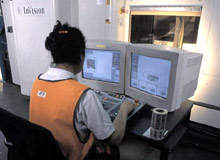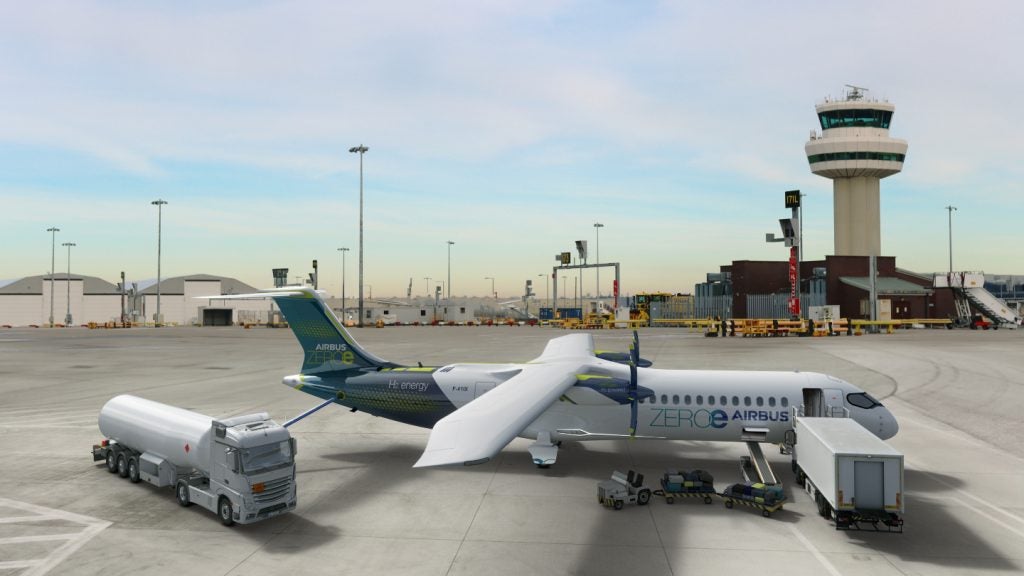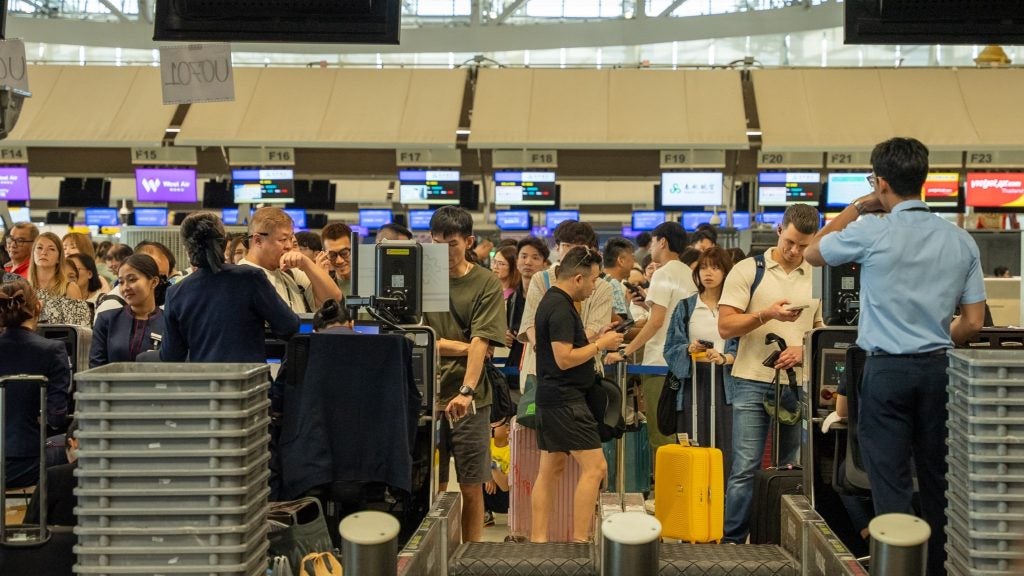
Mandated to screen all checked baggage using explosive detection systems at airports by 31 December 2003, the Transportation Security Administration (TSA) deployed two types of screening equipment: explosives detection systems (EDS), which use computer-aided tomography x-rays to recognise the characteristics of explosives, and explosives trace detection (ETD) systems, which use chemical analysis to detect traces of explosive material vapours or residues.
TSA has made substantial progress in installing EDS and ETD systems at the USA’s more than 400 airports to provide the capability to screen all checked baggage using explosive detection systems. However, in initially deploying EDS and ETD equipment, TSA placed standalone ETD and the minivan-sized EDS machines – mainly in airport lobbies – that were not integrated in-line with airport baggage conveyor systems.
TSA officials stated that the agency’s ability to initially install in-line systems was limited because of the high costs and the time required for airport modifications. These interim lobby solutions resulted in operational inefficiencies, including requiring a greater number of screeners, as compared with using EDS machines in-line with baggage conveyor systems.
TSA and airport operators are taking actions to install in-line baggage screening systems to streamline airport and TSA operations, reduce screening costs, and enhance security. Eighty-six of the 130 airports we surveyed either have, are planning to have, or are considering installing full or partial in-line systems. However, resources have not been made available to fund these capital-intensive systems on a large-scale basis.
Also, the overall costs of installing in-line baggage screening systems at each airport are unknown, the availability of future federal funding is uncertain, and perspectives differ regarding the appropriate role of the federal government, airport operators, and air carriers in funding these systems.
CAPITAL-INTENSIVE SYSTEM
How well do you really know your competitors?
Access the most comprehensive Company Profiles on the market, powered by GlobalData. Save hours of research. Gain competitive edge.

Thank you!
Your download email will arrive shortly
Not ready to buy yet? Download a free sample
We are confident about the unique quality of our Company Profiles. However, we want you to make the most beneficial decision for your business, so we offer a free sample that you can download by submitting the below form
By GlobalDataWhile in-line EDS baggage screening systems have a number of potential benefits, the total cost to install these systems is unknown, and limited federal resources have been made available to fund these systems on a large-scale basis. In-line baggage screening systems are capital-intensive because they often require significant airport modifications, including terminal reconfigurations, new conveyor belt systems and electrical upgrades.
TSA has not determined the total cost of installing in-line EDS baggage screening systems at airports that it had determined need these systems to maintain compliance with the congressional mandate to screen all checked baggage for explosives using explosive detection systems, or to achieve more efficient and streamlined checked baggage screening operations.
However, TSA and airport industry association officials have estimated that the total cost of installing in-line systems is (a rough order-of-magnitude estimate) anything from $3bn to more than $5bn. TSA officials stated that they have not conducted a detailed analysis of the costs required to install in-line EDS systems at airports because most of their efforts have been focused on deploying and maintaining a sufficient number of EDS and ETD machines to screen all checked baggage for explosives.
TSA officials further stated that the estimated costs to install in-line baggage screening systems would vary greatly from airport to airport depending on the size of the airport and the extent of airport modifications that would be required to install the system.
While we did not independently verify the estimates, officials from the Airports Council International-North America and American Association of Airport Executives estimated that project costs for in-line systems could range from about $2m for a category III airport to $250m for a category X airport.
FUNDING FOR SYSTEMS
TSA and airport operators are relying on LOI agreements as their principal method for funding the modification of airport facilities to incorporate in-line baggage screening systems. As of January 2005, TSA had issued eight LOIs to reimburse nine airports for the installation of in-line EDS baggage screening systems for a total cost of $957.1m to the federal government over four years.
In addition, TSA officials stated that, as of July 2004, they had identified 27 additional airports that they believe would benefit from receiving LOIs for in-line systems because such systems are needed to screen an increasing number of bags due to current or projected growth in passenger traffic.
TSA officials stated that without such systems, these airports would not remain in compliance with the congressional mandate to screen all checked baggage using EDS and ETD. However, because TSA would not identify these 27 airports, we were unable to determine whether these airports are among the 45 airports we identified as in the process of planning or constructing in-line systems.
TSA officials stated that they also use other transaction agreements as an administrative vehicle to directly fund, with no long-term commitments, airport operators for smaller in-line airport modification projects. Under these agreements, as implemented by TSA, the airport operator also provides a portion of the funding required for the modification.
As of 30 September 2004, TSA had negotiated arrangements with eight airports to fund small permanent in-line projects or portions of large permanent in-line projects using other transaction agreements. These other transaction agreements range from about $640,000 to help fund the conceptual design of an in-line system for one terminal at the Dallas Fort-Worth to $37.5m to help fund the design and construction of in-line systems and modification of the baggage handling systems for two terminals at the Chicago O’Hare International.
TSA officials stated that they would continue to use other transaction agreements to help fund smaller in-line projects.
Airport operators also used the FAA’s Airport Improvement Program – grants to maintain safe and efficient airports – in fiscal years 2002 and 2003 to help fund facility modifications needed to accommodate installing in-line systems. Twenty eight of 53 airports that reported either having constructed or planning to construct in-line systems relied on the Airport Improvement Program as their sole source of federal funding.
Airport officials at over half of the 45 airports that we identified are in the process of planning or constructing in-line systems stated that they will require federal funding in order to complete the planning and construction of these in-line systems. TSA officials also reported that additional airports will require in-line systems to maintain compliance with the congressional mandate to screen 100% of checked baggage for explosives.
Despite this reported need, TSA officials stated that they do not have sufficient resources in their budget to fund additional LOIs beyond the eight LOIs that have already been issued.
The Vision 100 – Century of Aviation Reauthorization Act (Vision 100) provided for the creation of the Aviation Security Capital Fund to help pay for, among other things, placing EDS machines in line with airport baggage handling systems.
However, according to OMB officials, the President’s fiscal year 2005 budget request, which included the Aviation Security Capital Fund’s mandatory appropriation of $250m, only supported continued funding for the eight LOIs that have already been issued and did not provide resources to support new LOIs for funding the installation of in-line systems at additional airports.
NEED FOR SYSTEMATIC ANALYSIS
At the time of our March 2005 report, TSA had not completed a systematic, prospective analysis of individual airports or groups of airports to determine at which airports installing in-line EDS systems would be cost-effective in terms of reducing long-term screening costs for the government and would improve security.
Such an analysis would enable TSA to determine at which airports it would be most beneficial to invest limited federal resources for in-line systems rather than continue to rely on the standalone EDS and ETD machines to screen checked baggage for explosives, and it would be consistent with best practices for preparing benefit-cost analysis of government programmes or projects called for by OMB Circular A-94.
TSA officials stated that they had not conducted the analyses related to the installation of in-line systems at individual airports or groups of airports because they have used available staff and funding to ensure all airports have a sufficient number of EDS or ETD machines to meet the congressional mandate to screen all checked baggage with explosive detection systems.
During the course of our review, in September 2004, TSA contracted for services to develop methodologies and criteria for assessing the effectiveness and suitability of airport screening solutions requiring significant capital investment, such as those projects associated with the LOI programme. In July 2005, TSA officials stated that TSA and DHS are reviewing a draft report from the study.
According to these officials, the study will provide TSA with a strategic plan for its checked baggage screening programme, including the best screening solution for airports processing most of the airlines’ baggage volume, and the capital costs and staffing requirements for each solution.
COST SAVINGS POSSIBLE
Although TSA had not conducted a systematic analysis of cost savings and other benefits that could be derived from the installation of in-line baggage screening systems, TSA’s limited, retrospective cost-benefit analysis of in-line projects at the nine airports with signed LOI agreements found that significant savings and other benefits may be achieved through the installation of these systems.
This analysis was conducted in May 2004 – after the eight LOI agreements for the nine airports were signed in July and September 2003 and February 2004 – to estimate potential future cost savings and other benefits that could be achieved from installing inline systems instead of using standalone EDS systems. TSA estimated that in-line baggage screening systems at these airports would save the federal government about $1bn compared with standalone EDS systems and that TSA would recover its initial investment in a little over one year.
TSA’s analysis also provided data to estimate the cost savings for each airport over the seven-year period. According to TSA’s data, federal cost savings varied from about $50m to over $250m at eight of the nine airports, while at one airport there was an estimated $90m loss.
According to TSA’s analysis of the nine LOI airports, in-line cost savings critically depend on how much an airport’s facilities have to be modified to accommodate the in-line configuration. Savings also depend on TSA’s costs to buy, install and network the EDS machines, as well as subsequent maintenance cost and the number of screeners needed to operate the machines in-line instead of using standalone EDS systems.
In its analysis, TSA also found that a key factor driving many of these costs is throughput – how many bags an in-line EDS system can screen per hour compared with the rate for a stand-alone system. TSA used this factor to determine how many standalone EDS machines could be replaced by a single in-line EDS machine while achieving the same throughput.
According to TSA’s analysis, in-line EDS would reduce by 78% the number of TSA baggage screeners and supervisors required to screen checked baggage at these nine airports, from 6645 to 1477 screeners and supervisors.
However, the actual number of TSA screeners and supervisor positions that could be eliminated would be dependent on the individual design and operating conditions at each airport.
MORE PLANNING NEEDED
TSA has made substantial progress in installing EDS and ETD systems at the USA’s airports – mainly as part of interim lobby screening solutions – to provide the capability to screen all checked baggage for explosives, as mandated by Congress.
With the objective of initially fielding this equipment largely accomplished, TSA needs to shift its focus from equipping airports with interim screening solutions to systematically planning for the more optimal deployment of checked baggage screening systems.
Part of such planning should include analysing which airports should receive federal support for in-line EDS baggage screening systems based on cost savings that could be achieved from more effective and efficient baggage screening operations and on other factors, including enhanced security.
Also, for airports where in-line systems may not be economically justified because of high investment costs, a cost-effectiveness analysis could be used to determine the benefits of additional standalone EDS machines to screen checked baggage in place of the more labour-intensive ETD machines that are currently being used at the more than 300 airports.
In addition, TSA should consider the costs and benefits of the new technologies being developed through its research and development efforts, which could provide smaller EDS machines that have the potential to reduce the costs associated with installing in-line EDS baggage screening systems or to replace ETD machines currently used as the primary method for screening.
An analysis of airport baggage screening needs would also help enable TSA to determine whether expected reduced staffing costs, higher baggage throughput and increased security would justify the significant up-front investment required to install in-line baggage screening.
TSA’s retrospective analysis of nine airports installing in-line baggage screening systems with LOI funds, while limited, demonstrated that cost savings could be achieved through reduced staffing requirements for screeners and increased baggage throughput.
In fact, the analysis showed that using in-line systems instead of standalone systems at these nine airports would save the federal government about $1bn over seven years and that TSA’s initial investment would be recovered in a little over one year. However, this analysis also showed that cost savings may not be achieved for all airports.
In considering airports for in-line baggage screening systems or the continued use of standalone EDS and ETD machines, a systematic analysis of the costs and benefits of these systems would help TSA justify the appropriate screening for a particular airport, and such planning would help to support funding requests by demonstrating enhanced security, improved operational efficiencies, and cost savings to both TSA and the affected airport.
To assist TSA in planning for the optimal deployment of checked baggage screening systems, we recommended in our March 2005 report that TSA systematically evaluate baggage screening needs at airports, including the costs and benefits of installing in-line baggage screening systems at airports that do not yet have in-line systems installed.
DHS agreed with our recommendation, stating that TSA has initiated an analysis of deploying in-line EDS machines and is in the process of formulating criteria to identify those airports that would benefit from an in-line EDS system. DHS also stated that TSA has begun conducting an analysis of the airports that rely heavily on ETD machines as the primary checked baggage screening technology to identify those airports that would benefit from augmenting ETDs with standalone EDS equipment.







